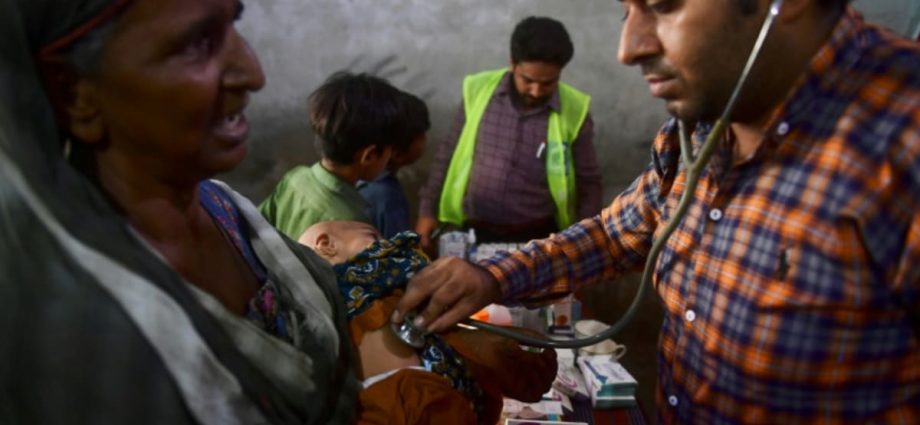
Many had made their way to the clinic walking barefoot through filthy floodwater and mud.
“My child’s foot is burning with pain. My feet too,” said Azra Bhambro, a 23-year-old woman who had come to the clinic for help.
Abdul Aziz, a doctor in charge of Alkhidmat’s clinics in the area, told AFP that cases of scabies and fungal infections were on the rise.
Scabies outbreaks are common in crowded places with tropical conditions – such as flood relief camps and shelters – and can lead to severe itching and rashes, according to the World Health Organization (WHO).
Memon told AFP that many of the patients at the clinic could not afford to purchase shoes.
MAJOR HEALTH HAZARDS
The millions of people affected by the floods face major health hazards including potentially deadly diseases such as malaria and dengue fever, the WHO warned in a statement on Tuesday.
Sindh province, in Pakistan’s south, has been hit particularly hard, with vast swathes of land under water and many villagers forced to head to large cities for shelter, food aid and medical assistance.
The health threat is even greater in areas such as Bhambro, where health services were already limited, and for the tens of thousands who are taking shelter in crowded relief camps.
“Ongoing disease outbreaks in Pakistan, including acute watery diarrhoea, dengue fever, malaria, polio and COVID-19 are being further aggravated, particularly in camps and where water and sanitation facilities have been damaged,” the WHO said.

